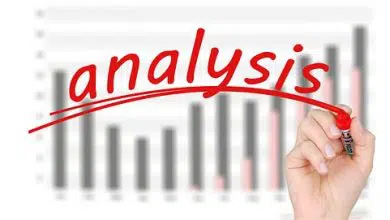The relationship between the environment and the economy can be depicted by means of “Material Balance Model”. In the figure, the production activities of the economic system are represented by the circle called ‘Production Sector‘. This circle represents all productive activities in the economic system, such as agriculture, factories, warehouses, mines, transportation and other public utilities that are engaged in the extraction of materials from the environment; their processing, refinement and rearrangement into marketable goods and services and their distribution throughout the economy to the point of ultimate use.
Another circle in Material Balance Model is labeled as ‘Household Sector‘ which depicts the individual consumers in the economy. What is produced in the production sector of this model economy goes to individuals acting as consumers. This is a simplified two-sector model of the economic system to show the relationship between the environment and the economy.
 We have dispensed with the conventional portrayal of the economic system showing circular flow of money and opposite flow of goods and services between production sector and consumption sector. In the conventional analysis, the household sector provides ‘factor inputs’ for money-income; and production sector provides goods and services in return for money payments, making the circular flow complete in two opposite directions .
We have dispensed with the conventional portrayal of the economic system showing circular flow of money and opposite flow of goods and services between production sector and consumption sector. In the conventional analysis, the household sector provides ‘factor inputs’ for money-income; and production sector provides goods and services in return for money payments, making the circular flow complete in two opposite directions .
This conventional ‘circular flow‘ of money and goods fails to explain the material flows and basic laws of physics governing them and assumes that goods and services are produced out of ‘something’. Where from that ‘something’ comes and where to that ‘something’ goes are not explained in conventional portrayal of circular flow of goods and services in a two-sector model.
The Material Balance Model depicted in Figure illustrates the ‘Environment‘ as a large shell surrounding the economic system, just like the womb covers the embryo. Actually, the relationship between the Environment and the Economic System is that of a Mother to an Unborn Baby in the uterus; providing sustenance to the growing embryo and carrying away the wastes. These ‘inputs’ and ‘wastes‘, are portrayed in the model. Raw material inputs that flow from environment are processed and produced in the “Production Sector” supplying the consumable final products to the household sector. In this process, the production sector creates some waste products which are sent back to the environment.
The household sector does not consume all the products supplied. They have ‘wastes‘ called ‘residues‘ which are unwanted by-products of the consumption activities of the households. These unwanted wastes or residues are returned back to the environment. Thus, there is constant flow of residues from both production and consumption sectors back to the environment.
These material flows must obey the basic law of physics governing the ‘conservation of matter‘. Assuming this to be a very simplified economy where there are no exports and imports; where there are no net accumulation of stocks of plants, equipment, inventories, consumer durable etc., the mass of residuals returned to the natural environment must be equal to the mass of basic fuels, food, minerals and other raw materials entering the processing and production system including the gases taken from the atmosphere.
This is the principle behind material balance. This holds good for each sector of the economic system separately and also for the economic system as a whole. Thus, in the absence of inventory accumulations, the flow of consumer goods from the production sector to the household sector must be equal to the mass flow back to the environment.
Fig. 3.1 Relationship between Environment and Economy Material Balance




